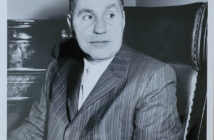While it might seem a semantic difference to a modern reader, this represented a terrible affront to a carefully crafted understanding of the nature of Jesus Christ. It puts Jesus, the Son, on the same level of divinity as God, the Father. Constantinople immediately reminded Rome of the 7th Canon of the Council of Ephesus, which banned modification of the Nicene Creed.
The combination of these two factors proved to be more than the Pope, Archbishop of Rome, could stand. This is when he sent Cardinal Humbert to Constantinople. The rest is history.
There have seen several attempts to reunify the Eastern Orthodox and Catholic Churches, such as the Second Council of Lyon and the Council of Florence. It was not until 1965 that Pope Paul VI and Patriarch Athenagoras of Constantinople (even though the city has since been named Istanbul, the name Constantinople is used concerning Eastern Orthodoxy) lifted the mutual excommunications leveled toward each other from a millennium ago. Since this monumental act the Pope has visited several Orthodox churches, even celebrating Eucharist with his Eastern counterparts. As an interesting side note, both Popes John Paul II and Benedict XVI have omitted the filioque when reciting the Nicene Creed in Greek during these cross-cultural masses.
As the 21st century dawns, it seems like the Roman and Eastern Orthodox Churches come ever closer to a true reunion. Is it possible for these two august bodies to truly put aside centuries of distrust and doctrinal differences and embrace each other fully? Only time will tell, but the first constructive, albeit tentative, steps have been taken.



